Pop Culture
‘It Took Forever to Get to Those Pinks’: Here’s How the Set Design Team Behind ‘Barbie’ Brought the Doll’s World to Vibrant Life
The Greta Gerwig film also took inspiration from artists Wayne Thiebaud and Takashi Murakami.
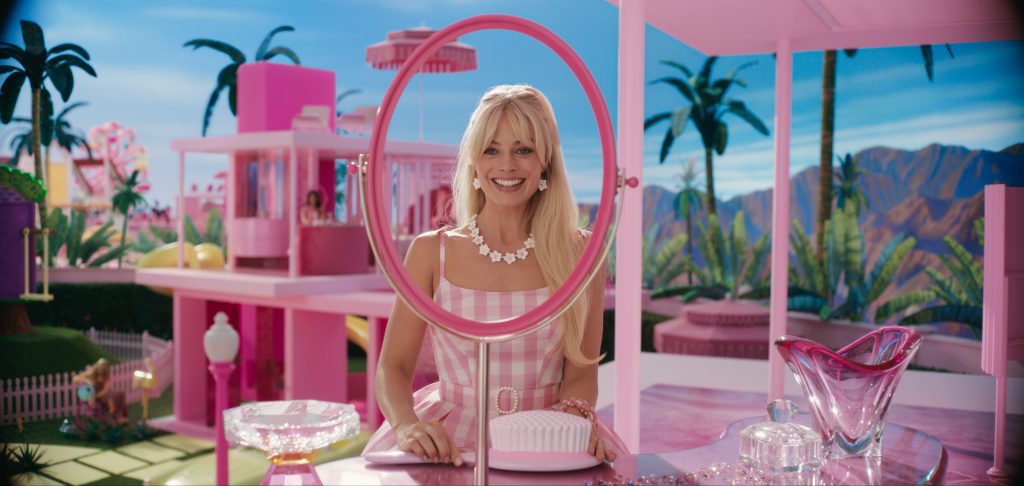
The Greta Gerwig film also took inspiration from artists Wayne Thiebaud and Takashi Murakami.

Mary Elizabeth Andriotis

As you might expect, bringing the world of Barbie to life for Greta Gerwig’s summer hit of the same name involved quite a lot of pink—enough that production for the film, famously, caused a worldwide shortage of Rosco’s pink Fluorescent Paint.
According to film’s production designer, Sarah Greenwood, this particular pigment from Rosco was used as a base to create the 12 or so shades of pink seen throughout the movie. Once the perfect pink hue was crafted, the painters ordered liters of the pigment, only for the design team to find that there was not enough of it available to meet their requirements.
This led to what Greenwood told Artnet News was a “mad scramble” to find more of this particular tint at various film studios throughout the U.S. and Europe. The team also sourced a similar color match from another paint brand.
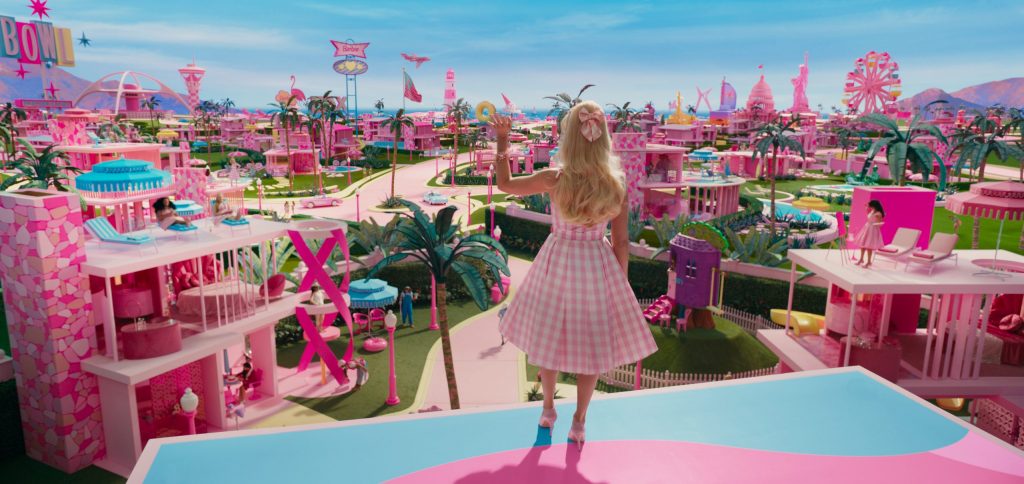
Still from Barbie (2023). Courtesy Warner Bros. Pictures.
“To get to those pinks, it took forever,” added set decorator Katie Spencer. She joked that those involved in the paint selection process became “pink-blind,” comparing the hunt for the right hue to snow blindness. Through their efforts, the team was ultimately successful in locating enough of the highly coveted pigment.
“You kind of have to find a way through. Nothing’s going to wait for you. You’re not going to say, ‘Okay, we’ll just wait for this,’” said Spencer.
The color scheme of Barbie Land came about, in part, from director Gerwig’s admiration for American painter Wayne Thiebaud, best known for his radiant paintings of cake, ice cream, sundaes, and the like. He also served as a source of inspiration for Gerwig’s directorial debut, Lady Bird (2017).
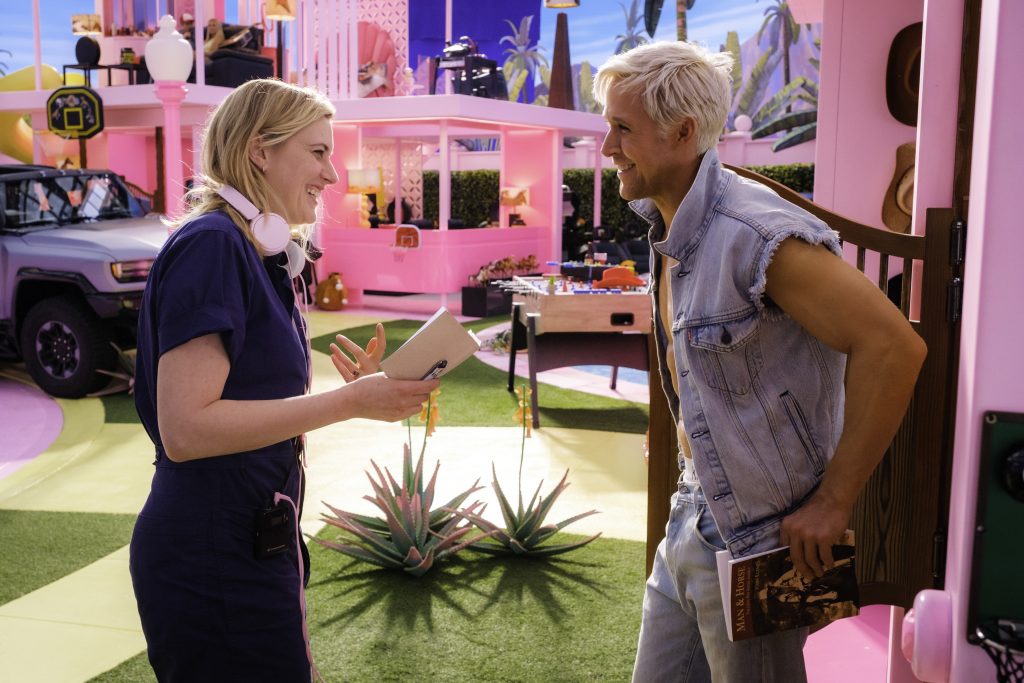
Director Greta Gerwig and Ryan Gosling, who plays Ken, on the set of Barbie (2023). Photo: Jaap Buitendijk.
“[Thiebaud] uses no black, and no white in his shadows,” mused Greenwood. “His shadows are always made of beautiful purples and blues, and that was very much something that we did in our Barbie Land: we used no black, no white, no chrome.”
While Barbie’s famed Dreamhouse and its surrounding homes were inspired by mid-century Modernism and Palm Springs architecture, one residence, that of Weird Barbie (played by Saturday Night Live alum Kate McKinnon), is intentionally separate.
She is the overly-played-with Barbie, whose hair is chopped and whose forehead bears marker scribbles. Similarly, her home is “skewed,” said Greenwood, to encapsulate what this character represents, as she is far removed—in both her look and her home’s location—from the other, more picture-perfect Barbies.
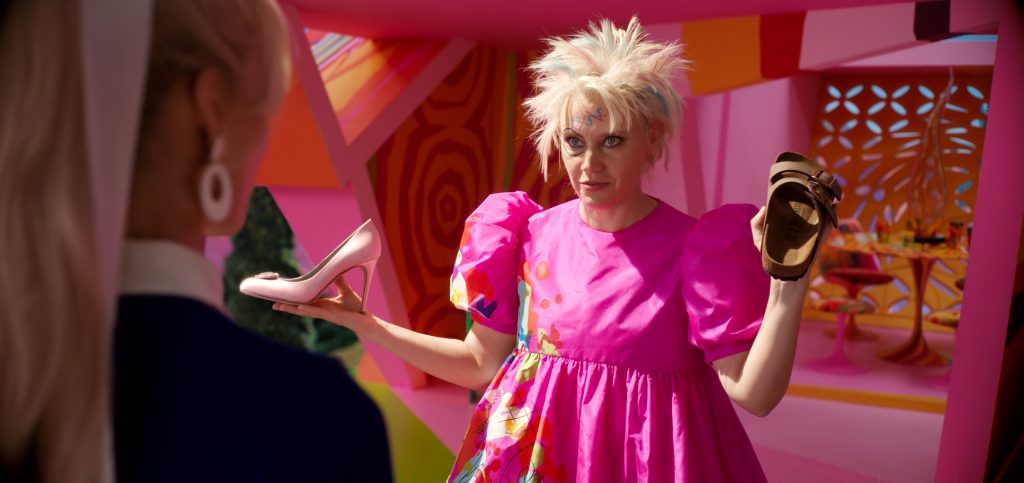
Still from Barbie (2023). Courtesy Warner Bros. Pictures.
Instead of looking like a quintessential Barbie Dreamhouse, Weird Barbie’s home is an amalgamation of various Dreamhouses, set atop a perfectly landscaped hilltop, overlooking all of Barbie Land. Greenwood added that this dwelling acts as a sort of Barbie HQ-slash-haven, where damaged or discontinued Barbies go to get fixed.
The otherness of this abode’s design and location was inspired by a myriad of sources. Takashi Murakami “in a blender” was one such reference, said Greenwood—given the numerous vibrant colors seen throughout the exterior and interior—while both the Victorian home from Alfred Hitchcock’s Psycho and Boo Radley’s home in To Kill a Mockingbird served as inspirations due to their “looming presences.” Like Radley, Weird Barbie is a harmless-yet-judged character given her apparent differences from her fellow Barbies.
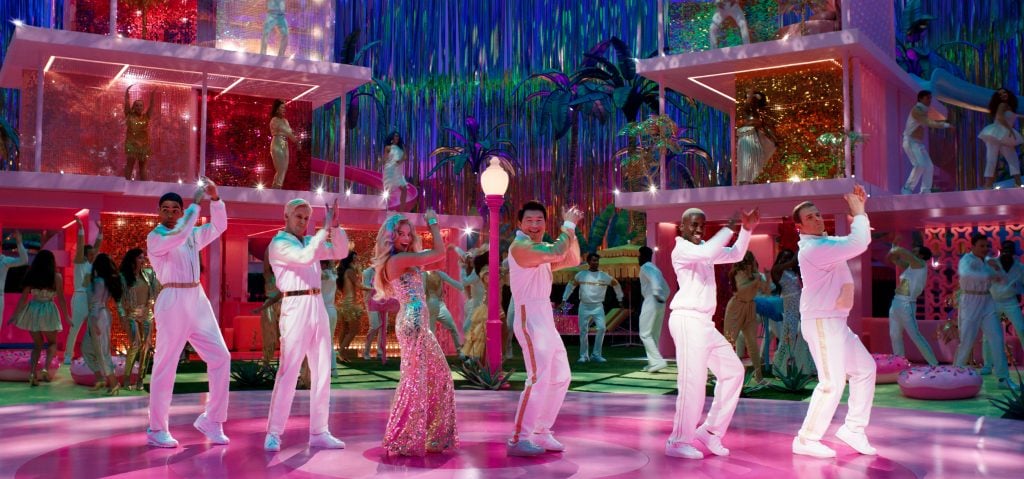
Still from Barbie (2023). Courtesy Warner Bros. Pictures.
Barbie’s Dreamhouse, on the other hand, remains true to Mattel’s original playset, featuring life-sized iterations of the doll’s accessories, which were scanned and transformed using CGI.
Inside the residence, the famed doll (played by Margot Robbie) wakes up in a pink velvet heart-shaped bed, complete with a sequin comforter and a seashell-shaped headboard inspired by Sandro Botticelli’s The Birth of Venus (1485–86). Her see-through closet was inspired by a toy box, as the doll’s clothes and accessories are often visibly laid out in the same fashion.
And while the Barbie sets sadly no longer exist in full-size form—since sets are often taken apart due to their grand size and sometimes recycled for other films—detailed miniatures of Barbie Land, which were also used in the film, still survive.